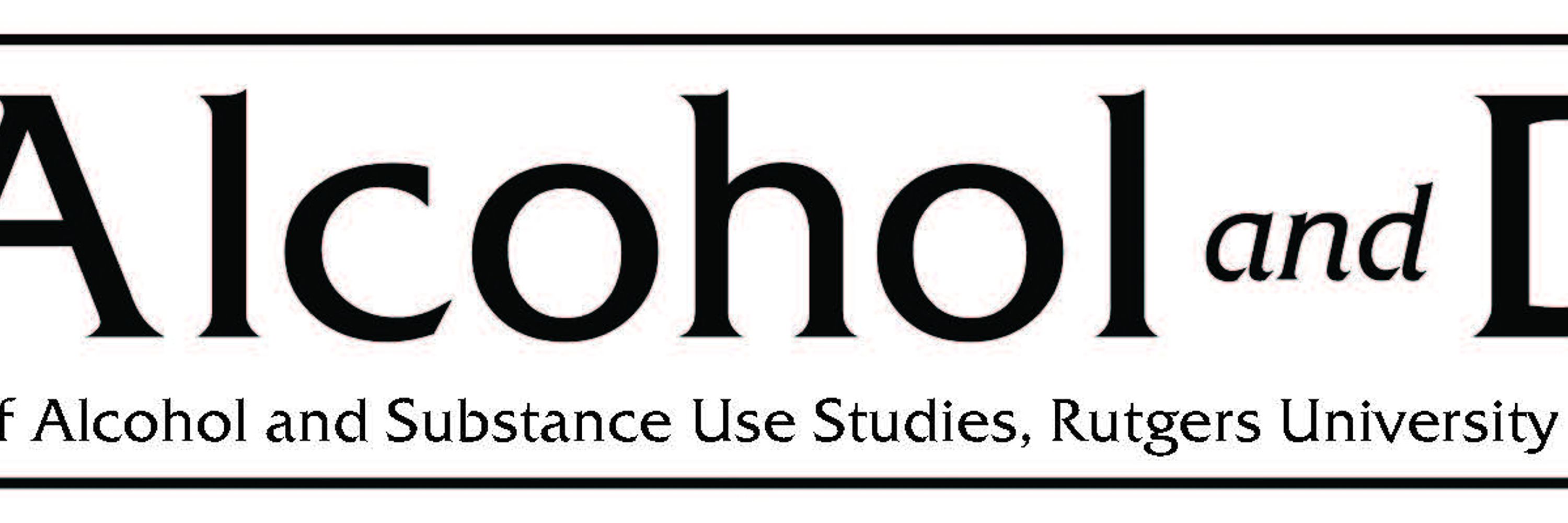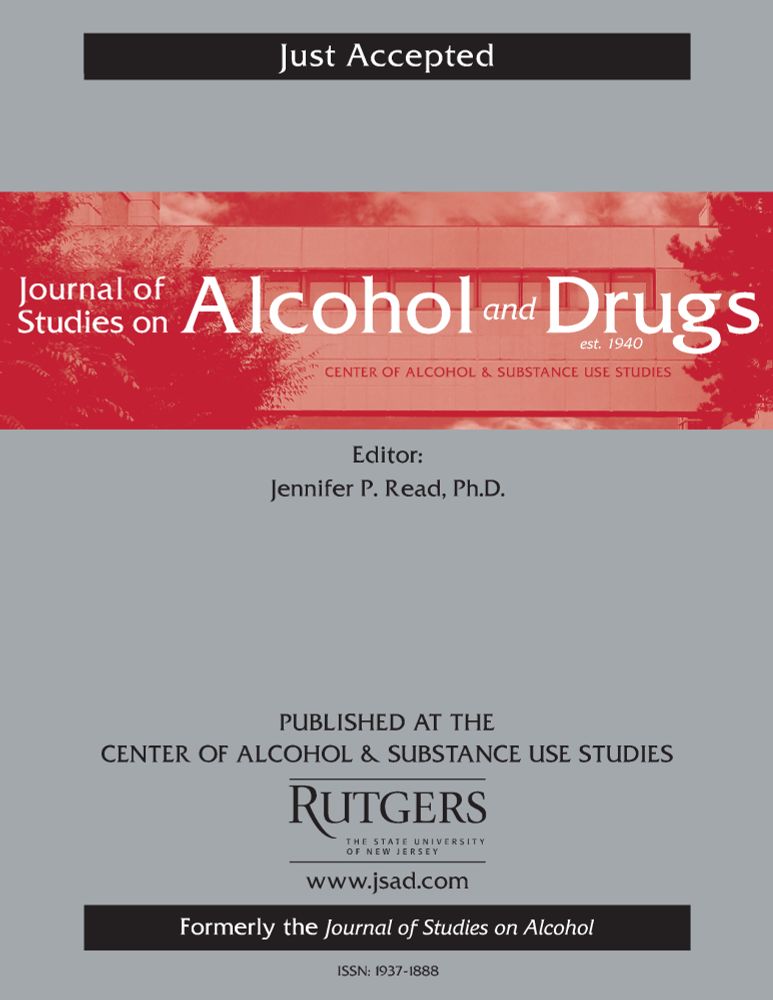
A nonprofit publication based at the Center of Alcohol and Substance Use Studies at Rutgers, The State University of New Jersey.
@bumedicine.bsky.social @ucl.ac.uk
www.jsad.com/doi/full/10....

@bumedicine.bsky.social @ucl.ac.uk
www.jsad.com/doi/full/10....
@ubuffalo.bsky.social
www.jsad.com/doi/full/10....

@ubuffalo.bsky.social
www.jsad.com/doi/full/10....
@deptvetaffairs.bsky.social @isparc-umasschan.bsky.social @umasschan.bsky.social
www.jsad.com/doi/abs/10.1...

@deptvetaffairs.bsky.social @isparc-umasschan.bsky.social @umasschan.bsky.social
www.jsad.com/doi/abs/10.1...
@thompsonriversu.bsky.social @queensuhealth.bsky.social
@queensuresearch.bsky.social
www.jsad.com/doi/full/10....

@thompsonriversu.bsky.social @queensuhealth.bsky.social
@queensuresearch.bsky.social
www.jsad.com/doi/full/10....
www.jsad.com/doi/full/10....

www.jsad.com/doi/full/10....
@jeffbphd.bsky.social
www.jsad.com/doi/full/10....

@jeffbphd.bsky.social
www.jsad.com/doi/full/10....
@bcmhouston.bsky.social
www.jsad.com/doi/full/10....

@bcmhouston.bsky.social
www.jsad.com/doi/full/10....
@uclasemelfriend.bsky.social @rand.org @ucla-isap.bsky.social
www.jsad.com/doi/full/10....

@uclasemelfriend.bsky.social @rand.org @ucla-isap.bsky.social
www.jsad.com/doi/full/10....
www.jsad.com/doi/full/10....

www.jsad.com/doi/full/10....
@uconnhealth.bsky.social @rutgersarc.bsky.social @drrebeccasmith.bsky.social @ecjohnson.bsky.social
www.jsad.com/doi/full/10....

@uconnhealth.bsky.social @rutgersarc.bsky.social @drrebeccasmith.bsky.social @ecjohnson.bsky.social
www.jsad.com/doi/full/10....
www.jsad.com/doi/full/10....

www.jsad.com/doi/full/10....
@apha.org #apha2025
www.apha.org/events-and-m...

@apha.org #apha2025
www.apha.org/events-and-m...
@syracuseutoday.bsky.social @syracuseu.bsky.social
www.jsad.com/doi/full/10....

@syracuseutoday.bsky.social @syracuseu.bsky.social
www.jsad.com/doi/full/10....
@thegraduatecenter.bsky.social
www.jsad.com/doi/full/10....

@thegraduatecenter.bsky.social
www.jsad.com/doi/full/10....
@recoveryanswers.bsky.social @mgbresearch.bsky.social @ufresearch.bsky.social @harvardmed.bsky.social
www.jsad.com/doi/full/10....

@recoveryanswers.bsky.social @mgbresearch.bsky.social @ufresearch.bsky.social @harvardmed.bsky.social
www.jsad.com/doi/full/10....
@pennstatehhd.bsky.social @pennstateuniv.bsky.social
www.jsad.com/doi/abs/10.1...

@pennstatehhd.bsky.social @pennstateuniv.bsky.social
www.jsad.com/doi/abs/10.1...
@yaleadm.bsky.social @yalesph.bsky.social
www.jsad.com/doi/full/10....

@yaleadm.bsky.social @yalesph.bsky.social
www.jsad.com/doi/full/10....
www.jsad.com/do/10.15288/...

www.jsad.com/do/10.15288/...
Check out all the new articles here: www.jsad.com/toc/jsad/86/6

Check out all the new articles here: www.jsad.com/toc/jsad/86/6
@stinamair.bsky.social @tamar-antin.bsky.social @prc-rc-1.bsky.social @calgbtqhealth.bsky.social
www.jsad.com/doi/abs/10.1...

@stinamair.bsky.social @tamar-antin.bsky.social @prc-rc-1.bsky.social @calgbtqhealth.bsky.social
www.jsad.com/doi/abs/10.1...
@rwjms.bsky.social @rutgersarc.bsky.social
www.jsad.com/doi/abs/10.1...

@rwjms.bsky.social @rutgersarc.bsky.social
www.jsad.com/doi/abs/10.1...
@bussw.bsky.social @uwpsychology.bsky.social
@alisonmooremd.bsky.social @ucsdmedschool.bsky.social
www.jsad.com/doi/abs/10.1...

@bussw.bsky.social @uwpsychology.bsky.social
@alisonmooremd.bsky.social @ucsdmedschool.bsky.social
www.jsad.com/doi/abs/10.1...
@kristiejrutgers.bsky.social @mailysteers.bsky.social @rutgersarc.bsky.social @rutgersifh.bsky.social
www.jsad.com/doi/full/10....

@kristiejrutgers.bsky.social @mailysteers.bsky.social @rutgersarc.bsky.social @rutgersifh.bsky.social
www.jsad.com/doi/full/10....
@johnshopkinssph.bsky.social @janardan.bsky.social @drjthrul.bsky.social @capraustralia.bsky.social
www.jsad.com/doi/abs/10.1...

@johnshopkinssph.bsky.social @janardan.bsky.social @drjthrul.bsky.social @capraustralia.bsky.social
www.jsad.com/doi/abs/10.1...

